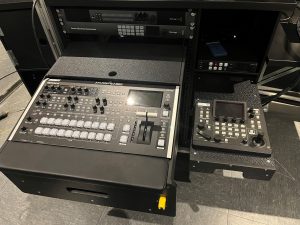- Streaming live content is a powerful way to deliver live messaging to an online audience.
- Attention to lighting makes a huge difference to the look of productions.
- Capturing clear audio is an essential piece of a high-quality livestream.
- Switching between camera views helps tell the story and keeps the audience engaged.
Streaming live content is an effective way for businesses and content creators to deliver live messaging to an online audience. The past few years have seen exponential growth on platforms like YouTube, Facebook, Zoom, Twitch, and Periscope to name a few. To attract and engage an audience, it’s a great time to rethink your streaming strategy and upscale your production value. The process is simpler than you think.
Why Now?
After years of videos and livestreams, we’ve seen their production value improve significantly. Live audiences are also becoming more discerning. Elevate the quality of your streams with some simple techniques used in professional video creation. We’ll focus on options that won’t break the bank.
Many individuals and businesses seek people for the production and technical aspect of streaming. If you improve the quality of your streams, it may be worth considering offering your services to others wanting to create live content.
Live audiences are also becoming more discerning. Elevate the quality of your streams with some simple techniques used in professional video creation.
Livestreaming Advantages
One of the great advantages of livestreaming your content is that it requires no post-production work. Anyone who has created videos traditionally can appreciate the agility of delivering content this way.
Fresh content has its own intrinsic value which is part of the appeal of live video. Plus, delivering regular messaging to your audience allows you to develop your brand. You can create a body of work that places you as the expert in your field. If you add production value to your livestreams, you are doing both your brand and audience a huge favor.
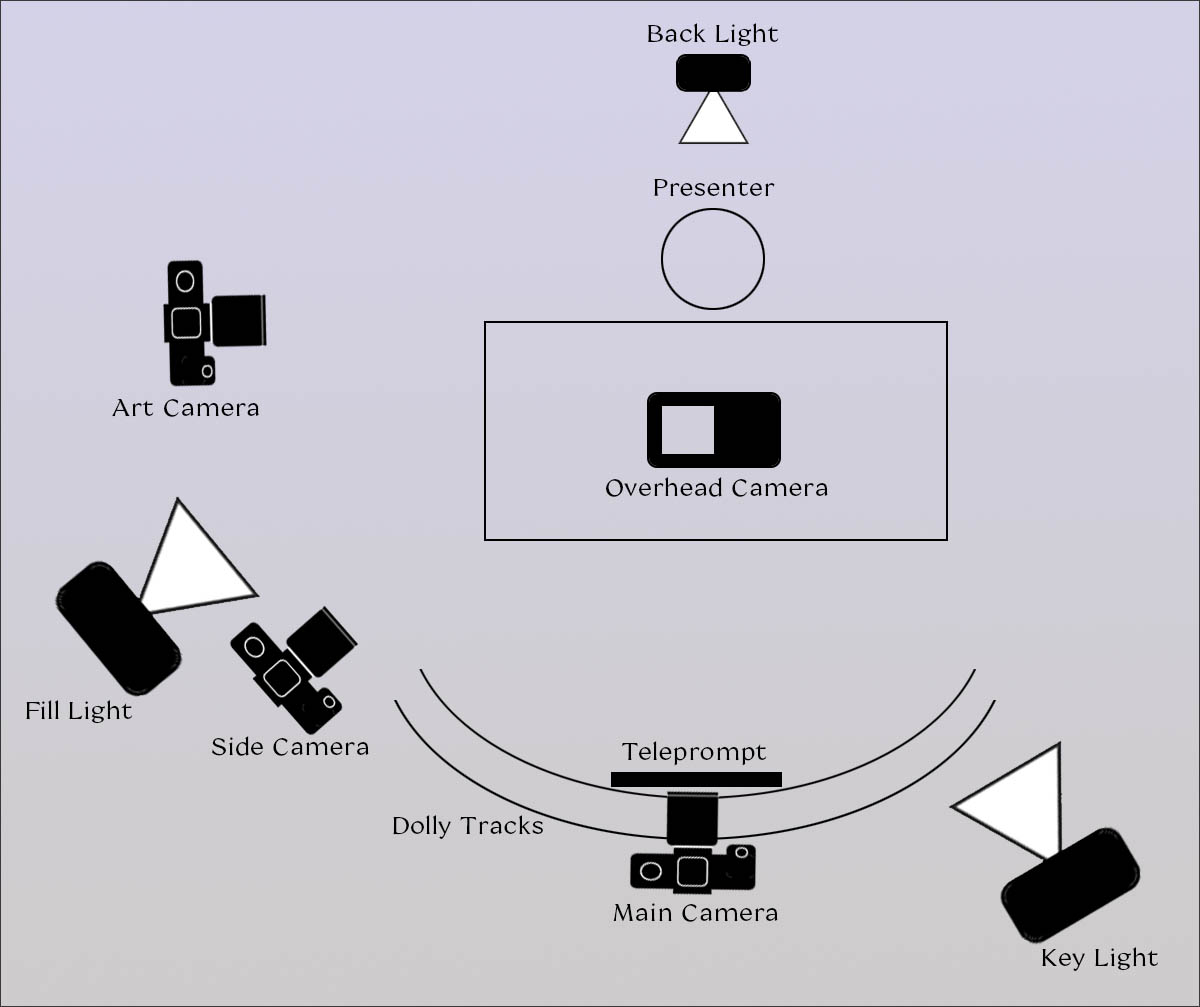
Tips to Improve Your Content
To lift your game, there are a few things that you should get right. Remember: content is and always will be king. The trick is to offer something both informative and visually inspiring.
1. Plan
It’s impossible to overestimate the importance of good planning. Having a clear objective for your livestream is essential. People are time-poor, and with the amount of content available, you must deliver value. Being live also comes with a few surprises, so don’t leave too much to chance.
Just like any storytelling, your streams will benefit from having an introduction, a middle (the information), and an end. A script is often the best way to keep things on track.
Tip: Try a Teleprompter
Teleprompter apps for iPads are useful. There are a few things to keep in mind.
- Write a casual, conversational script.
- Practice reading/delivering the script several times.
- Make sure the font size is easy to read. No squinting.
- Carefully adjust the speed of the teleprompt. Slower is often better.
- Place the teleprompt directly under the main camera lens so that you are speaking directly to your audience. Film a test run to make sure your delivery is natural.
The importance of having a clear objective and a well-structured plan for your livestream is essential.
It’s important to place the teleprompter as close to the lens of the main camera as possible. If also helps if the main camera is at least two meters away from the presenter. Otherwise, the audience will notice the eyeline of the presenter isn’t looking directly into the camera.
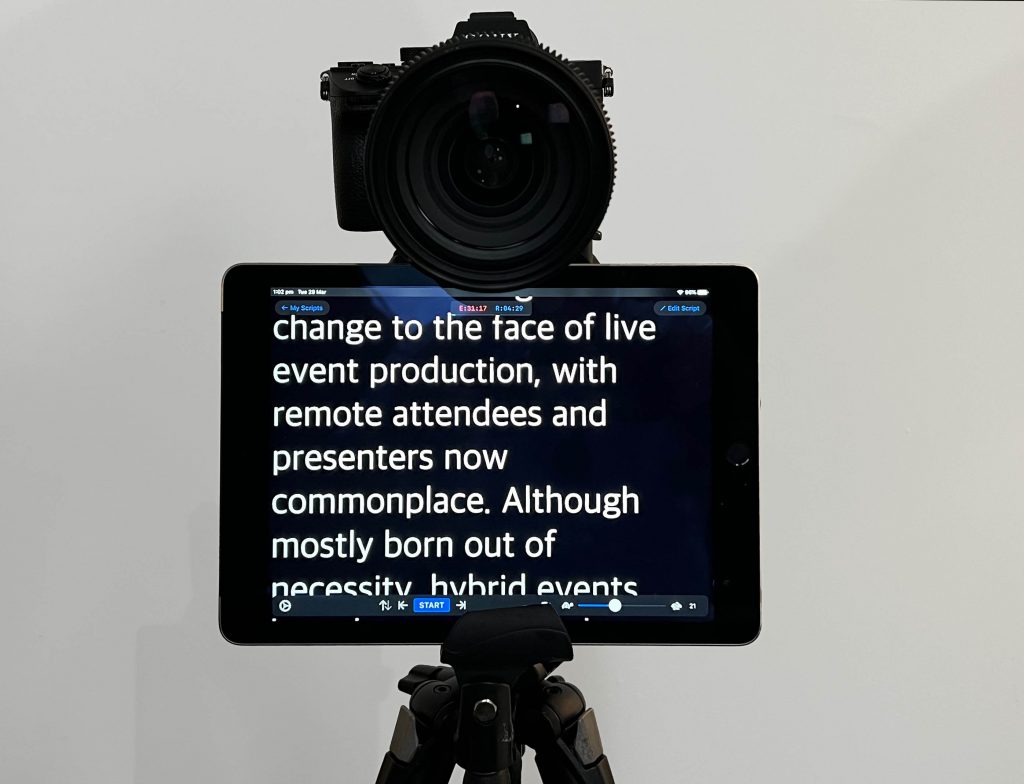

Another option is to buy a mirrored teleprompter. There are some excellent, inexpensive models available online. The advantage is that the camera lens looks through the moving text from an iPad, keeping the presenter’s eyes focused directly on the audience. This is a great investment for anyone doing lots of streaming.
Stay Engaged
Maintaining engagement is one of the most difficult things to do during a livestream. It’s almost impossible to read the audience and feed off their reactions. That’s why a good plan is even more important when you are streaming. Remember to connect with your audience. You must get them excited about what you are sharing. Enthusiasm, passion, and authenticity are compelling qualities in a presenter. Always remember that you are speaking to people like yourself.
The ending should be a quick summary of what you have presented. It should also have a short outline of the next stream to encourage people to come back.
2. Set the Mood
One takeaway from working on professional videos is taking time and care to get the set right. Think outside of the box. Try viewing the space you’re filming from different camera angles. You may surprise yourself with what you come up with. There is “one size fits all.” However, here are some easy tricks:
- Style to the personality of the script and the presenter.
- Remove clutter. It distracts from the message.
- Casual settings help to relax the viewer.
- Set the mood with good lighting.
One takeaway from working on professional videos is taking time and care to get the set right. Think outside of the box.
Lighting is Your Friend
When streaming there are a few things that you can do yourself that will make a huge difference to the outcome. Lighting is one of them. Lighting yourself and the room doesn’t need to be expensive. You can often use lights that you have around the home. You can also buy inexpensive, variable soft boxes online. They provide adjustable, diffused light, which flatters the presenter.
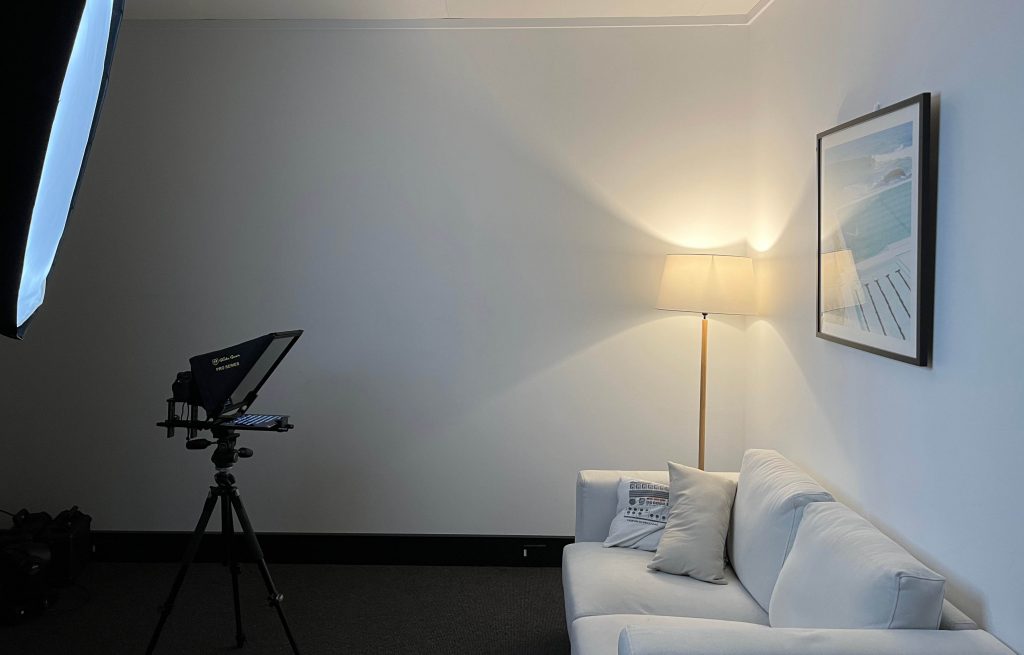
In the room below, we have used a corner lamp as a purposeful light. It appears the light is coming from it, when the presenter is being lit by a soft box. Information is abundant online regarding the best way to light a room and a presenter. Typically, they focus on:
- The three-point lighting technique (includes backlighting)
- Purposeful lighting for the room (includes lamps etc.)
- The effective use of natural light
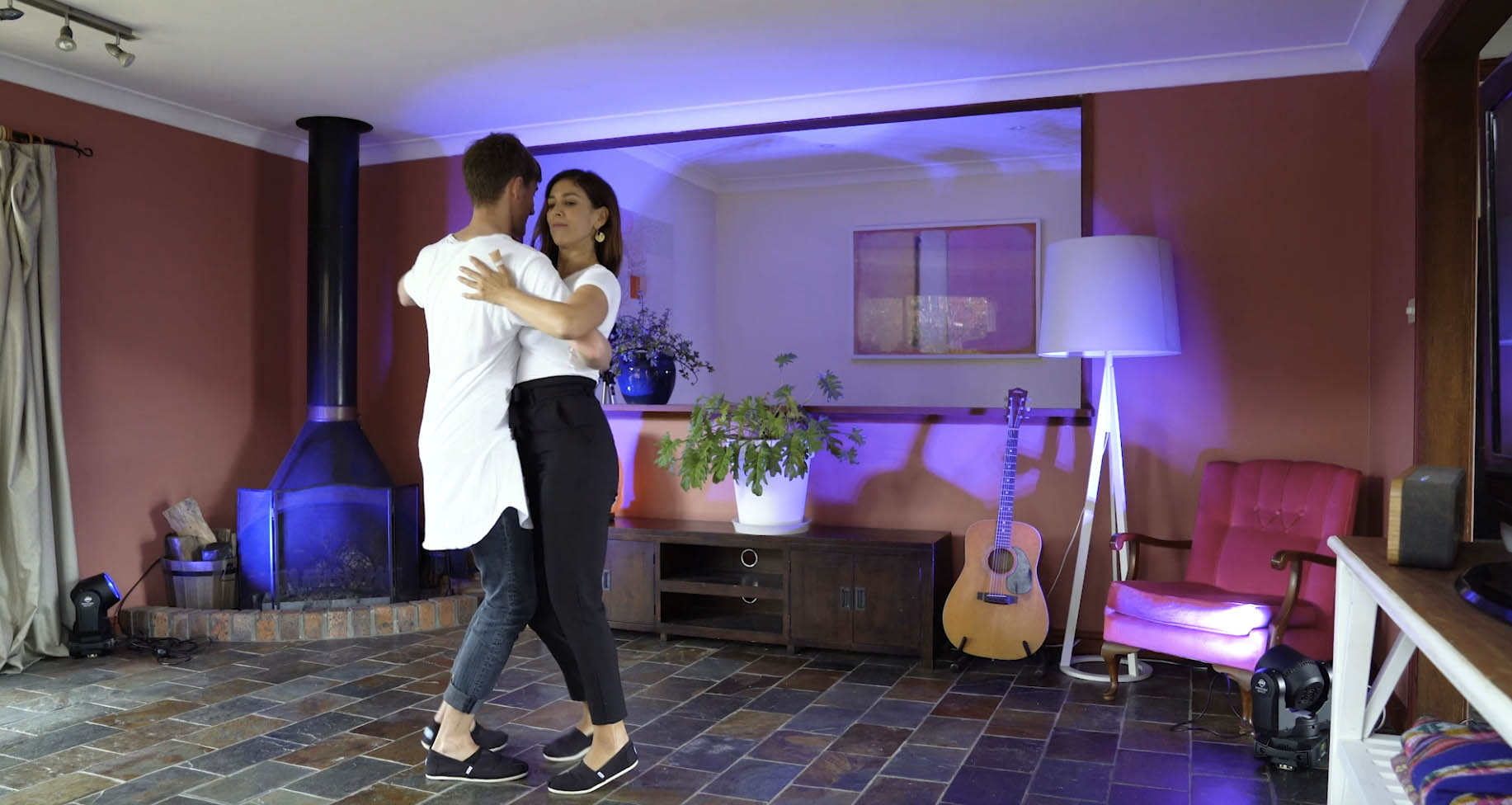
3. Clear Audio
The audio quality of streams, when only using a smartphone, is often disappointing. One of the reasons for this is that most people position their phones in the best place for vision and not sound. This generally means that the phone is too far away from the voice, and the audio becomes very roomy. This is even more of an issue when music makes up an important part of your presentation.
Microphones
I highly recommend using a lavalier (lapel) microphone for your voice if you are simply speaking to the camera. They come in both wired and wireless formats. They are also affordable and give you the freedom to move around without the need for a handheld microphone and/or stand.
It is also possible to use an on-camera condenser shotgun mic. This is useful if you are limited with your audio mixing capabilities, as you can set the mic levels internally on the camera.
An on-camera condenser shotgun mic is useful if you are limited with your audio mixing capabilities, as you can set the mic levels internally on the camera.
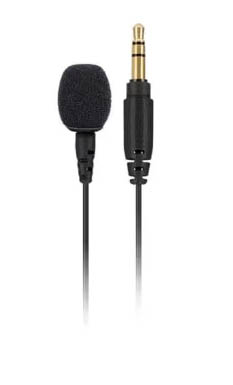

Mixer
If you are using several audio sources in your livestream, it may be worth considering getting a dedicated audio mixer. Another option is to use an AV mixer (described below). With an AV mixer, you can run several microphones for your voice and instruments (if required). You’ll also have line inputs for recorded music or instruments with line outputs, such as keyboards. You can also stream using multiple cameras, which brings us to our next production tip.
4. Multiple Cameras to Shift the Focus
People are getting spoiled. We’ve all seen too much TV with expensive sets and multiple camera angles. When we look at our streams, the first thing we notice is the lack of movement from the eye of the camera and the limited angles of vision. We can create a ton of visual interest by adding a few viewpoints.
As a videographer, this is where things get exciting. Switching between camera views helps to tell the story and keeps the audience engaged. The most common camera views are:
- Main camera: Sits in front of the presenter and is the focus for most of the conversation. Think of it as the audience.
- Side camera: Usually at about 45 degrees and gives the audience a close-up, side shot of the presenter.
- Overhead: This is a top-down shot, fixed on what the presenter is doing.
- Art camera: This is a creative view of the set.
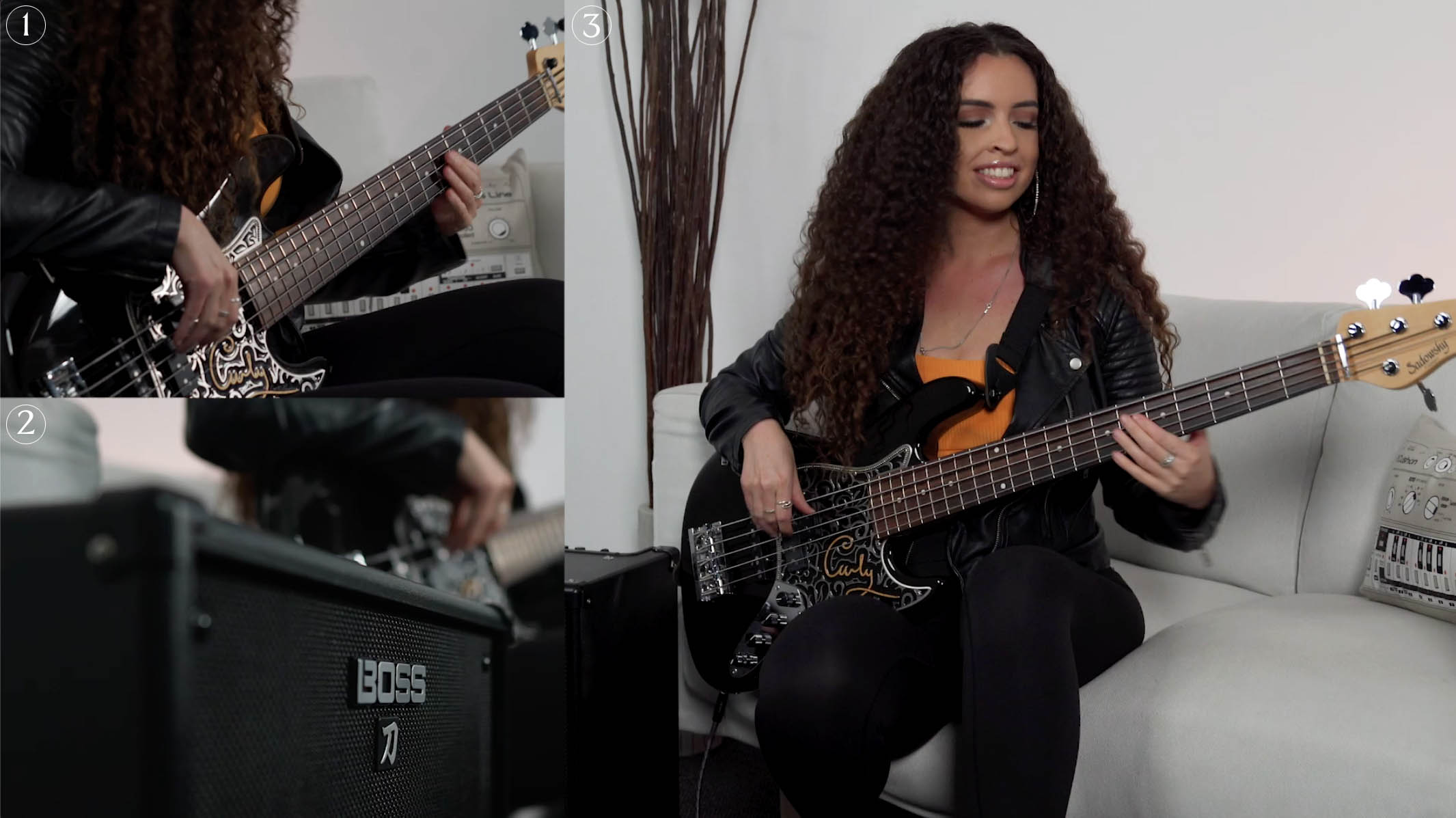
It isn’t necessary to have top-end video or mirrorless cameras for your shoot. Smartphones and inexpensive Sony Handycams have respectable lenses and do the trick. Still, quality cameras with great lenses do make a big difference, but they are expensive.
It isn’t necessary to have top-end video or mirrorless cameras for your shoot. Smartphones and inexpensive Handycams can do the trick.
Overhead Camera
One of the more useful shots to have in your stream is the overhead camera. I have seen some crazy DIY articles on how to build the perfect overhead camera platform. I have also constructed a few myself.
Use a lightweight camera. It reduces the complexity of the framework needed to support the camera. If you are using a Handycam or a smartphone for your overhead camera you can get away with using a microphone stand with a boom.
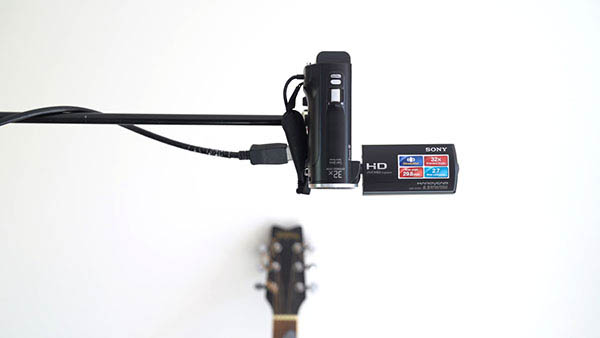
Moving Cameras
Another important technique for livestreaming and video is moving the cameras while shooting. If you watch the cinematography in any film, you will see movement in almost every shot. There are a few inexpensive ways to achieve this below.
Create Movement in Your Streams
Creating smooth movement while filming takes a bit of practice. One method is to create a homemade dolly on curved tracks and a hand-held gimbal. Made from PVC Pipe (curved with ties) and skateboard wheels, a dolly captures smooth movement when rolled across the tracks. This technique keeps the camera framed as it’s moved in a semi-circle around the presenter.
Another important technique for livestreaming and video is moving the cameras while shooting.

The Parallax Effect
The parallax effect occurs when you have some objects closer to the lens than others. The closer objects appear to move slower than the objects farther away. This is a great way to bring inanimate objects to life. It is also a creative way to open and close your livestream.
Handheld iPhone Gimbal
A handheld gimbal allows you to follow the action and helps the audience to feel like they are in the room. Move slowly to avoid seasickness.
Every stream will have its own specific needs. Often, in a three-camera setup, one of the cameras can be an art camera for a cut-away shot. For example, it may be the vision looking through a plant or candle. This gives the audience a moody outlook between the other more practical shots.
5. An AV Streaming Mixer to Put it All Together
As mentioned above, great audio and a multi-camera shoot will add a lot to the production quality of your streams. A vision mixer is what brings it all together. A vision mixer makes it easy to fade between the different cameras and it will also handle the audio mix beautifully. It’s like having a mini TV studio at your fingertips.
There are a lot of AV mixers on the market. It is important to find one that can handle different types of cameras, including smartphones. It’s also useful if you can get one that has a USB 3.0 encoder built-in. This will enable you to stream directly out of the mixer to your computer. Alternatively, you can buy an external encoder to translate the HDMI signal to USB 3.0 for streaming. Here are a few useful effects that you can use with a mixer:
- Split Screen Effect
- Picture-in-Picture
- Cross Fade Effect
Great audio and a multi-camera shoot will add a lot to the production quality of your streams.
Another important thing to look for is an onboard audio mixer. The quality of these will vary considerably between AV streaming mixers. Your AV switcher will probably be the biggest expense when setting up a quality streaming solution. I can’t overstate the importance of including one in your plans. They are great for single-operator use, are easy to use, and are simple to learn. Roland offers many powerful switchers. Below are a few AV Streaming Mixers that are a great choice for livestreaming. Happy streaming.
- The Roland V-02HD Streaming Bundle (V-02HD + HDMI to USB 3.0 Converter)
- The VR-1HD Streaming Mixer
- The Roland V-1HD Streaming Bundle (V-1HD + HDMI to USB 3.0 Converter)



